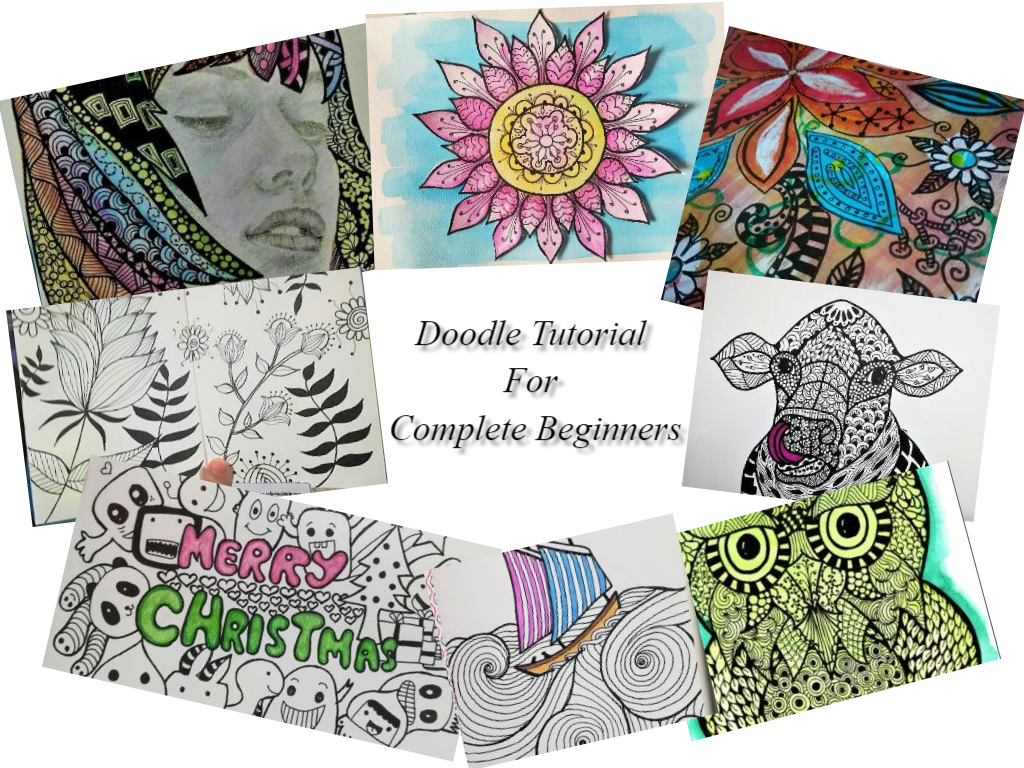
A lot of people have requested from me to teach them doodling. To be honest I don't quite know how to teach people doodling because after doing it for awhile, the process is spontaneous for me. I mean I don't have to think too much when I doodle. My mind just knew what patterns to use and when to use them.
Anyhow, it doesn't mean that there are no tips you can learn as a beginner doodler. In this tutorial, I will teach you the basic of doodling that includes the types of pattern, templates, and sample patterns. I even included a FREE 10 pages templates in PDF for you to practice on.
Let's begin!
The tools
You don't need fancy tools or pens for doodling. A ballpoint pen and a piece of paper are sufficed to get you started. However, I would like to encourage you to get a certain type of fine liners and markers and even papers if you are serious about pursuing the art of doodling.
Here are some of the pens/fine liners and markers I use to create my doodles. I have about 100 pens and markers in my collection and this is just a small part of it.

I use high-quality archival ink fine liners to doodle. Archival ink pens are lightfast (fade proof) and waterproof. I want my artwork to last for a long time and if I happen to sell any of them, I can have a peace of mind knowing that I have used a high-quality material to produce the artwork and it won't fade easily.
I am using fine liners from four different brands - Sakura Pigma Micron, Mitsubishi UniPin, Artline, and M&G SignMe. I often bought these pens in bulk, each with different nib size, the smallest is 0.05 and the largest is 1.0. If you are able to get all of them, that would be great but if not, get these basic sizes - 0.1, 0.3, 0.5. And don't forget some permanent markers. Sharpie is great but I prefer Pentel because it doesn't have a strong odor like Sharpie.
You can use drawing papers or A4 printing papers but if you want to use watercolors, make sure the paper is thick enough, at least 200gsm. If you plan to keep your artwork for a long time, I suggest you use acid-free papers to prevent yellowing over time.
Note: If you can't get any of these pens, a generic black gel pen will do but keep in mind that gel pens don't dry up immediately and they smudge.

To make your doodles lively you can use watercolors or colored pencils. I love water-soluble colored pencils because I can use them dry or wet.

Types of pattern
There are hundreds or maybe thousands of different doodle patterns you can use. However, for the sake of this tutorial, I have categorized the patterns into three types.
1) Geometric pattern
This pattern is made of geometric shapes - rectangles, squares, triangles and so on. Here is a couple of simple geometric patterns.
Draw some overlapping rectangles and circles. Use your marker to color the overlapped sections.


Draw some shapes on top of a straight line. Use your marker to color a certain section of the shapes.


2) Organic pattern
Organic patterns are elements that can be found in nature such as flowers, leaves, or vines. Here is a couple of simple organic patterns.
Draw a couple of flowers. Add some vines around the flowers, and finally, draw some leaves along the vines.



Draw a squiggle and add some leaves to it.

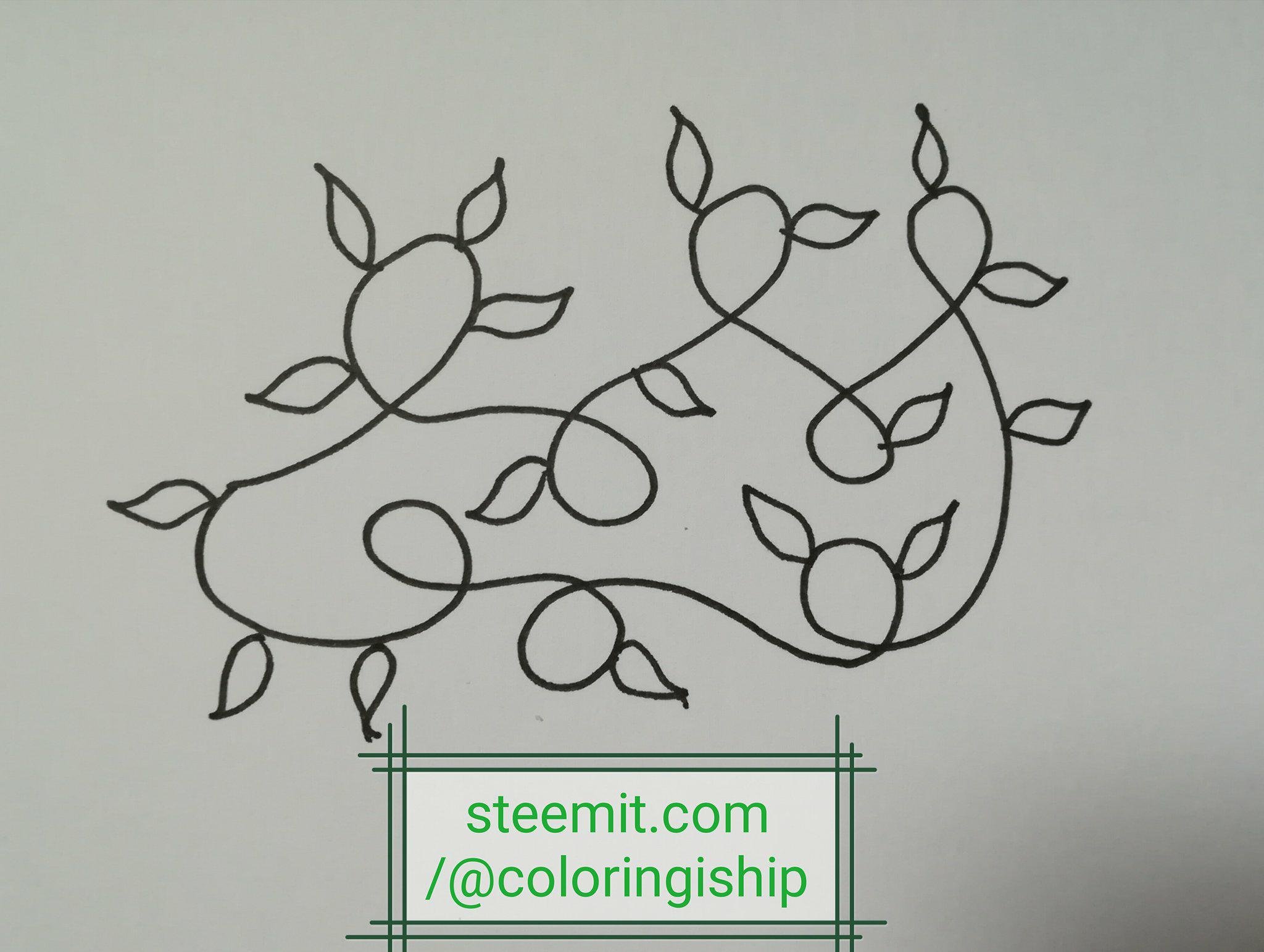
3) Filler pattern
Filler patterns or supportive patterns are used to fill up the gaps between two or more geometric/organic patterns. These patterns are the simplest to draw but they are also very important to make all of the patterns on your page "flow" into each other. Here are four examples of filler pattern.
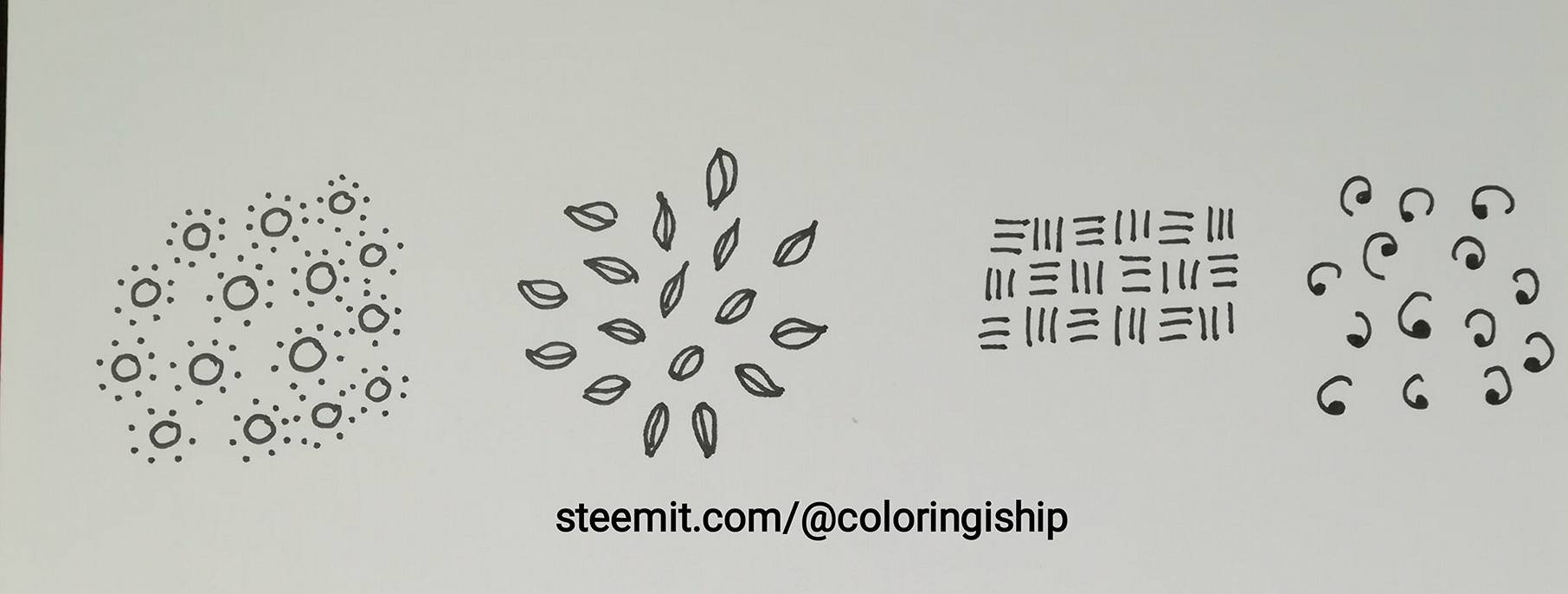
Here is an example where I included all three types of pattern in my bunny doodle. It is very easy, isn't it?

My twelve go-to patterns
Now that you have learned about the types of pattern, what next? How do you find patterns to draw? You don't have to stress out over this. Doodle is supposed to be fun and you are free to invent your own patterns. Draw whatever you think is fun and just let your creativity flow. I have included here twelve my go-to patterns that you can use in your own doodle art. You can even google for more ideas. Like I said, there are hundreds of patterns and you are spoiled for choice.


Templates
Now templates are not really necessary if you know how to draw basic animal shapes or whatever shape you like. I included this section for the benefit of complete beginners who don't know how to draw. Once you get the hang of doodling, I am pretty sure you can draw your own templates. There are two types of template - blank and with sections.
1) Blank template
A blank template is just a template without sections, like the bunny below. You can draw your own sections if you want to or leave it as it is and doodle freely in it.
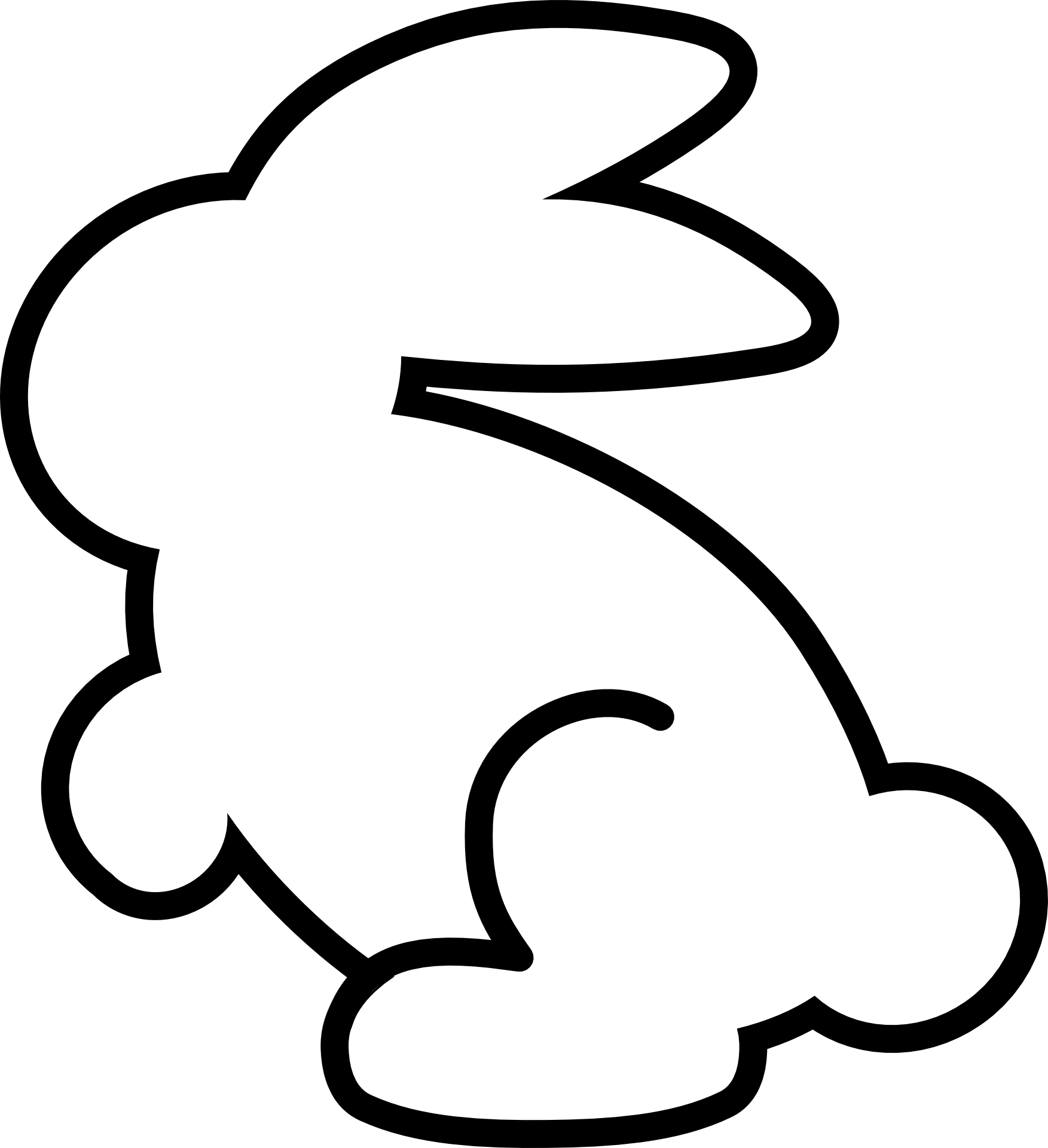
1) Template with sections
A template with sections is just what the name implies - a template with pre-included sections for you to doodle in. You can doodle different patterns in each section. See the example below.

I have uploaded a ten pages templates PDF for you to practice in. The templates are taken from a public domain site, openclipart.org. Download and print it. It is completely free! Use the link below to download it.
-->FREE 10 pages of templates for you to download (PDF)<--
Tips
A lot of people think they need talents to draw. The good news is you don't have to be artsy to doodle. If you don't know how to start, just pick one pattern from the sample given above. Draw it. The most important thing is to draw something. And once you completed that pattern, pick another one.
Use markers to draw the outline of your template or to draw the large patterns. And use your fine liners to draw the smaller patterns. Experiment with different nib sizes. I typically use 0.4 pen to doodle my patterns and 0.2 pen to draw fillers. If I want a pattern to pop up, I use a marker to thicken the outline. Using markers and different nib sizes prevent your artwork from looking flat.
You can use smaller size papers (A5 or B5) to doodle. Frame the completed doodle as decor or turn it into a postcard or bookmarks.
Don't be too hard on yourself. Be proud of yourself and your masterpiece!
Use your new found skills to participate in Steemit art challenges. I will host a new DOODLE CHALLENGE very soon. So make sure you practice your doodles.
If you have tried this tutorial and post it in Steemit, please tag me and leave the link to your post in the comment section below! I would love to see your masterpiece.
Thank you for visiting! What do you think of this tutorial? Please leave your comments below.
My previous posts:
Two-Hour Parenting Class For Those In Klang Valley
Owl Doodle Art | From Doodle To Various Products
Art Explosion Week 30 | A "Deviant" Cow
Daily Devotional | Money And False Sense of Security
My Sketchbook | Funny Moments In Our Day to Day Lives
Team Malaysia Babes | The Community
My Sketchbook | Sketches Of A Dancer
Steemit Milestone | 1000 Followers And Being A Force Of Good
Daily Devotional | Worry And Obedience
I am selling some of my paintings over on Artfinder. Shipping is FREE worldwide. You can check them out here: ARTFINDER.
My gifts & merchandise available at REDBUBBLE (international), Printcious & CreativeUnited (Malaysia).
Thank you!
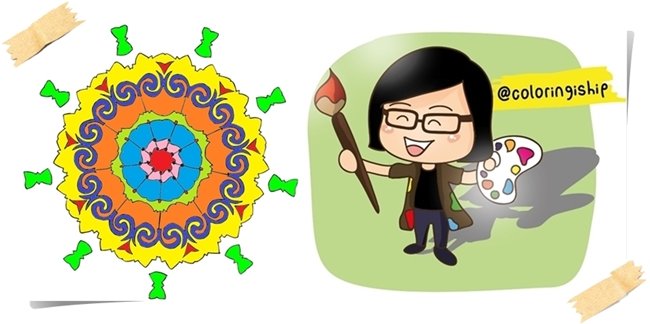
My avatar was illustrated by @pinstory

